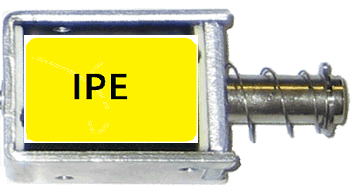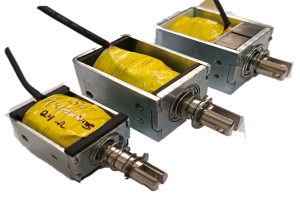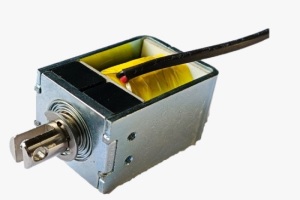

 A push-pull solenoid is a coil. When current passes through it, pulls (or pushes) a metal rod known as a plunger. In actuality, this is a pull-type solenoid with a spring to drive the plunger out again.
Push-pull solenoids that are effective and robust provide a lot of force for their relatively small size, which makes them especially suitable for high-force short-stroke applications.
These are frequently used to lock the batteries in vehicles & battery charging stations. And used in two-wheeler seats and handle locks.
A push-pull solenoid is a coil. When current passes through it, pulls (or pushes) a metal rod known as a plunger. In actuality, this is a pull-type solenoid with a spring to drive the plunger out again.
Push-pull solenoids that are effective and robust provide a lot of force for their relatively small size, which makes them especially suitable for high-force short-stroke applications.
These are frequently used to lock the batteries in vehicles & battery charging stations. And used in two-wheeler seats and handle locks.
| Force Range | 1N – 50 N |
| Voltage | 12 / 16 /24 V D C |
| Stroke Range | 1mm-20mm |
 Latching Solenoids use an electrical current pulse or internal permanent magnet material to hold a predetermined position without continuously applying an electrical current. Without any more electrical power input, the plunger will stay in this position until it has moved all the way and is in contact with the pole face plate. The permanent magnet secures the plunger in place.
The "holding" magnet's attraction must be cancelled in order to move the solenoid out of this held position by reversing the direction of the current flowing through the coil field (reverse polarity).
When the pulse time is significantly shorter than the hold duration, latching solenoids perform at their best. Although a latching solenoid may be utilized in situations with both short and lengthy strokes.
Latching Solenoids use an electrical current pulse or internal permanent magnet material to hold a predetermined position without continuously applying an electrical current. Without any more electrical power input, the plunger will stay in this position until it has moved all the way and is in contact with the pole face plate. The permanent magnet secures the plunger in place.
The "holding" magnet's attraction must be cancelled in order to move the solenoid out of this held position by reversing the direction of the current flowing through the coil field (reverse polarity).
When the pulse time is significantly shorter than the hold duration, latching solenoids perform at their best. Although a latching solenoid may be utilized in situations with both short and lengthy strokes.
| Force Range | 1N-50N |
| Voltage | 12 / 16 /24 V D C |
| Stroke Range | 2mm-20mm |